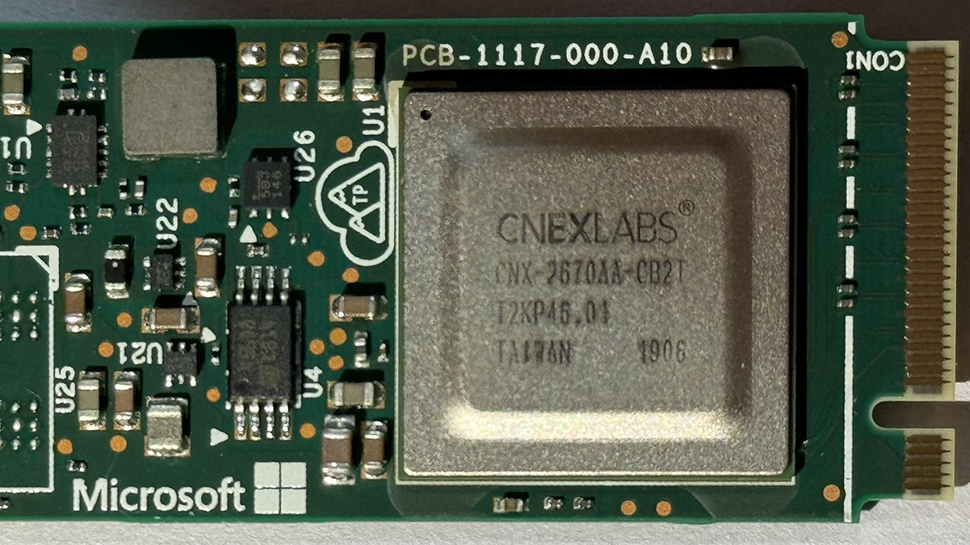
A newly-discovered, Microsoft-branded SSD suggests the tech giant may be – or has been at least - exploring new ways to optimize its data center storage.
The leaked images of a Microsoft Z1000 SSD show a 1TB NVMe M.2 drive, apparently boasting sequential read speeds of up to 2,400MB/s and write speeds of 1,800MB/s.
The Z1000 SSD, originally revealed by @yuuki_ans on X, is made up of a mix of components from various companies, including Toshiba NAND flash chips, Micron's DDR4 RAM cache, and a controller from CNEX Labs, a company best known for its work with data center hyperscalers.

Up to 4TB capacity
Back in 2018, CNEX Labs closed a $23 million Series D funding round led by Dell Technologies Capital which also included Microsoft’s venture fund M12. This money was partially used to fund a proprietary, advanced CNX-2670 controller that delivered 550,000 IOPS, a 25% performance increase over previously available M.2 form-factor SSDs at the time. The CNEX Labs controller in the leaked photos is CNX-2670AA-0821.
The SSD has a capacity of 960GB made up of four 256GB Toshiba BiCS4 96-layer eTLC chips and features a 1GB DDR4 RAM cache made by Micron to boost performance.
The leaked "engineering sample", produced on May 18, 2020 when much of the world was in Covid lockdowns, suggests the drive is part of a broader portfolio of SSD models. Its design allows for the addition of more DRAM and capacitors, hinting at larger versions.
As Tom’s Hardware notes "several unused solder pads are on both sides of the PCB, presumably for additional capacitors. This implies that there may be larger versions of the Z1000 with 2TB and perhaps even 4TB of room, given that more capacity would require more DRAM and capacitors to ensure data protection."
This isn't the first time Microsoft has experimented with hardware design for its data centers, having recently revealed its own-brand silicon hardware in order to help further the development and use of AI in businesses.
SSD: Microsoft Z1000 960GB M.2 22110 NVMe 1.2 主控(Control): CNEXLabs CNX-2670AA-CB2T(19y6w) 缓存(Cache): Micron(D9VPP) DDR4 1GB MT40A1G8SA-075:E 颗粒(NAND): Toshiba 3D eTLC - 256GB TH58LJT1V24BA8H(bics4 96L) https://t.co/pJegEYzsph pic.twitter.com/ifgxTDiiJMMarch 9, 2024







